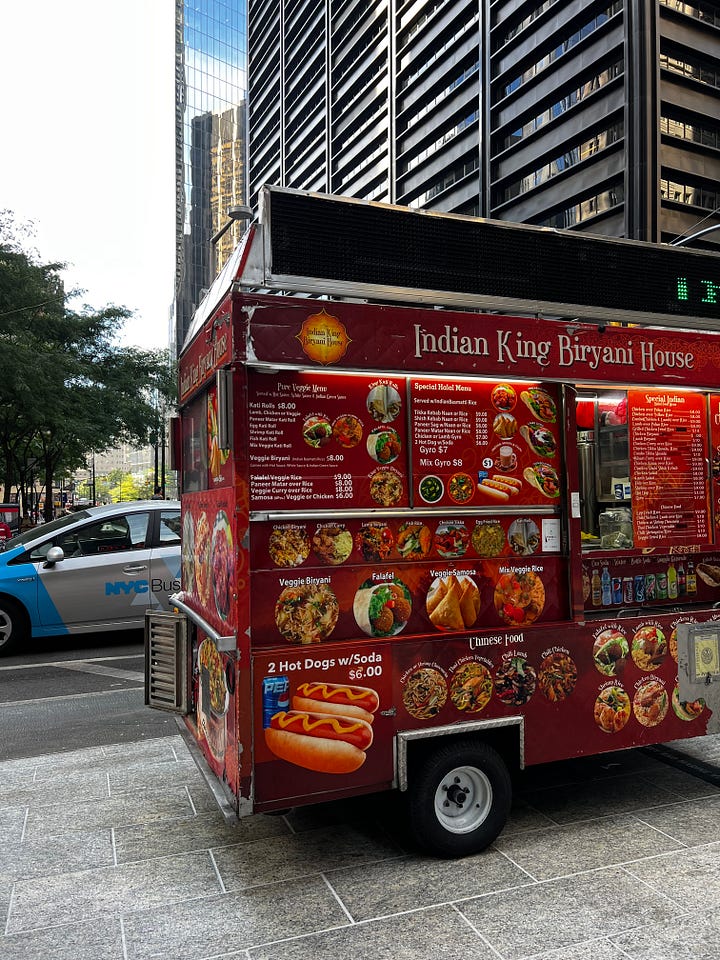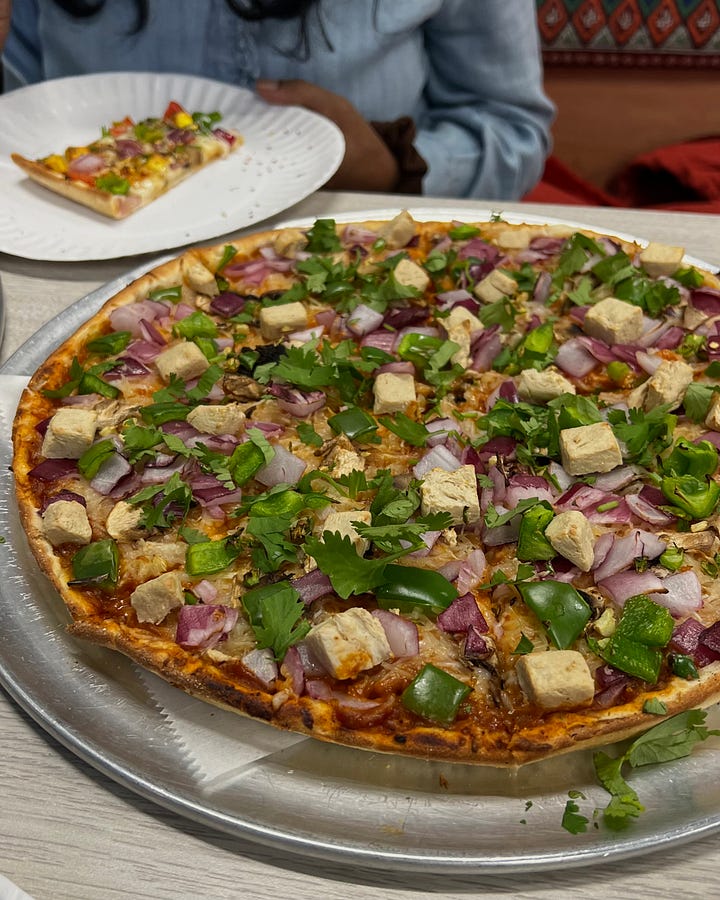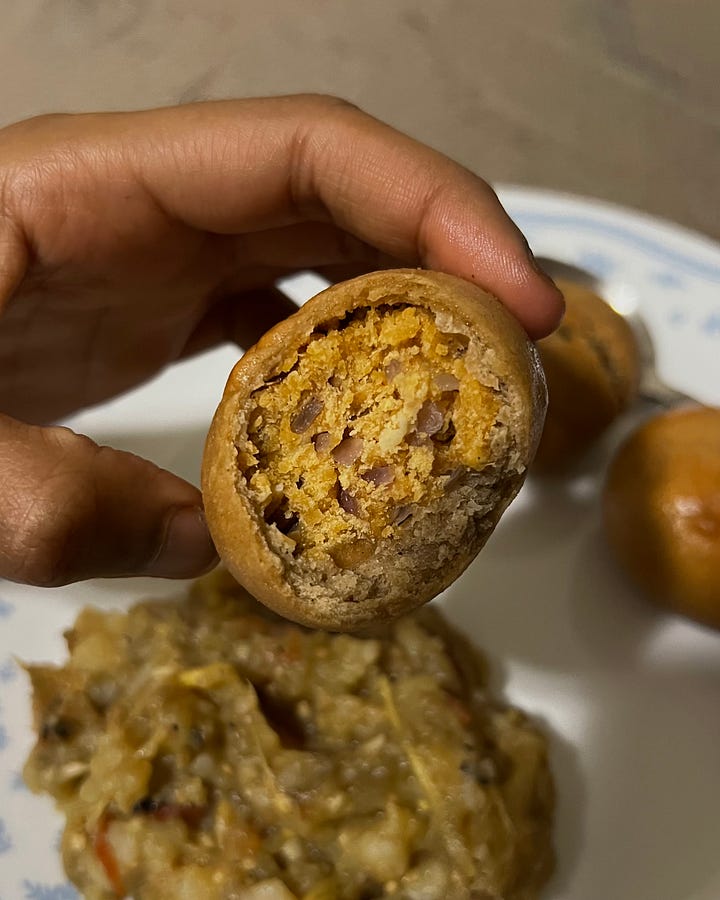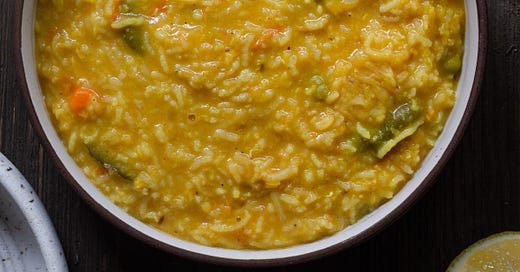Moving beyond outrage about cultural appropriation
from your local cafe to sattu and khichdi (Indian foodways, part two)
Sometimes the discourse about cultural appropriation is tiring. The same points are reiterated and tend to be observational, pointing out problems without elevating suggestions for a more respectful, culturally-sensitive future. This isn’t to say that calling out instances of cultural appropriation has no purpose, for raising awareness is part of altering perspectives. There is value in saying, “Chai tea latte is like saying tea tea latte,” but while this expression once seemed witty, it now feels worn-out yet often presented as a novelty. Likewise, Gwyneth Paltrow’s name studs conversations about cultural appropriation like a broken record. As easy as it is to blame a wealthy white woman who founded a wellness brand, the issues are obviously much larger than Goop.
Cultural appropriation was a hot topic in food media in 2020, when the surge of the Black Lives Matter Movement coincided with the Bon Appetit scandal. Some big names in food even hired experts to ensure they stayed safe from passionate members of the internet, who were equipped with snarky remarks that cut reputations like knives. But policing the globalization and portrayal of the Global South’s food traditions doesn’t seem like the most effective way to correct cultural appropriation. Some people are canceled, others enter the scene. Some people learn, others remain oblivious. We raise awareness about one thing, bringing some people to stop saying “chai tea latte” or using curry powder, while others move on to “new” trends rooted in long-established traditions. Powerful institutions continue to exploit cheap labor in the Global South, yet this doesn’t come up in dominant conversations as often as something a celebrity wore in a photo shoot or music video.
Cultural appropriation has received so much attention in food media that it makes me wonder whether some people continue bringing up the usual culprits because the internet loves a hot take—even when that so-called “hot take” is now lukewarm after being said dozens of times. As Vidya Balachander said in a Bad Table Manners episode, the discussions are grounded in outrage without substantial critical thought to support it, and it often ends there, serving a limited purpose.
Maybe this is a harsh perspective. Maybe critiques about cultural appropriation, even if they are repetitive, are necessary. From yoga to bindis to ashwagandha, some of us have heard it all, but have the people who need to hear it the most heard it? Maybe, maybe not. As Balachander elaborates, discussions about cultural appropriation won’t stop people from interpreting an ingredient or recipe as they wish, implying that something about the dominant discourse’s “rejectionist nature” isn’t working.
Appropriation of ingredients
I don’t want to recount what has already been said about cultural appropriation of Indian cuisine. Instead, I want to question why certain ingredients and recipes from the Global South reach mainstream wellness in the West, while others are left behind. I started this essay with this question in mind and a belly full of litti chokha, a Bihari classic where sattu, made of roasted gram flour, is stuffed inside a whole wheat casing, shaped into a ball, and fried or baked. Sattu, once mostly consumed by farmers and the working class in Bihar, has achieved superfood status in some parts of India, but it has managed to evade landing in the Whole Foods aisle—so far. Rumya Putcha, an anthropologist at the University of Georgia, thinks that certain items have ended up in supermarkets because of “top-down, distribution-buyer practices and marketing.” Supermarkets present commodities repackaged in neat, minimalistic containers that support exoticism while appealing to Western aesthetics.
Oh My Ghee! popcorn is at Erewhon (with packaging that says “It’s an East Coast kind of Zen”), haldi doodh is at Starbucks, and the complex flavors of masala chai are toned down at upscale coffee shops. If you’ve even slightly explored ideas about cultural appropriation, then you’ve surely come across turmeric, ghee, and chai – common victims mercilessly mishandled by wellness bloggers photographing “exotic” dishes on pristine marble countertops.
A possible explanation for why certain ingredients reach the West while others don’t: their potential uses in Western ways of eating and their popularity in India. Some ingredients are easily incorporated into Western foods, like turmeric, a spice with straightforward uses (or non-straightforward uses that shouldn’t exist, like my turmeric granola circa 2019). Meanwhile, hing is a spice that is far less likely to suit a Western palate. Ghee can replace butter in some dishes. Moringa and ashwagandha come in powdered forms that can be blended into smoothies. Toor dal can be used the same way as any lentil. Dosas can be thought of as lentil tortillas (this one hurts). Sattu is less familiar, but my mother predicts it will be here in another decade – just not yet, because it is only recently gaining traction throughout India.
While sattu hasn’t been blended into smoothies on my Instagram explore page yet, it has been branded and divorced from its original context in India, which brings forth a different question: is it cultural appropriation when Indian people are behind it? Some ingredients are so ubiquitous and widespread that their use in different regions of India may not evoke tensions. And there are other ingredients where their usage is complicated because the ingredient holds ties to class. In Shirin Mehrotra’s essay for Whetstone Magazine about how some peasant foods went mainstream, she says this about sattu:
“While buying packaged sattu isn’t a new practice—my family has been purchasing locally branded sattu for over a decade now—the idea of seeing it as a gourmet product makes me wonder what identity does food hold when it’s so far removed from the people who consume it.”
Appropriation of recipes
In college, I took a class where we traced the history of a recipe and shared our recipe with a classmate, who would film a video of them preparing it. I picked khichdi because I knew there would be interesting things to say about khichdi in its original context vs. khichdi as it spread beyond South Asia.
In the wellness world, headlines parade wellness by “kitchari”: the cleansing Ayurvedic dish that will reset digestion and make you look and feel better than ever!!! Several wellness media outlets have articles that discuss the “kitchari cleanse,” where people consume kitchari for every meal for several days. The author of a mindbodygreen article titled “I Tried The Ayurvedic Cleanse Sweeping Social Media. Here’s What Happened” credits two white wellness bloggers for introducing her to the kitchari cleanse. Likewise, there are written guides to doing the kitchari cleanse without mentioning khichdi’s origin in India. Instead, the deeply comforting dish becomes associated with restrictive eating and food combining.
Like khichdi, there are other Indian recipes and ingredients that frequently star in discussions about cultural appropriation, affirming that they have earned their place in the West, whereas others have been left behind, for better or for worse. A Bon Appetit article by Khushbu Shah states, “India is home to 1.3 billion people, and lately, it seems, 1.3 billion wellness trends.” Shah critiques the fact that “Ayurveda” has an Instagram hashtag with over a million posts, many of them featuring white wellness influencers.
However, some forms of cultural appropriation may eventually lead to appreciation. Even though white wellness influencers are usually admonished, some Indians are excited about people in the West embracing Indian culinary traditions, especially because Indian food has a reputation for being creamy and overly spicy. If influencers can be part of steering the cuisine’s perception in another direction, that isn’t the worst thing ever. On the other hand, this is potentially a form of recolonization that perpetuates an orientalist mindset. Putcha said it well: wellness influencers, often unintentionally, microdose on otherness and wellness traditions, basking in their ability to travel without moving.
As I considered cultural appropriation in food media in 2020, I ardently believed in only using recipes by people of the recipe’s culture of origin. Gone were my days of making Half-Baked Harvest’s coconut butter cauliflower and Minimalist Baker’s Thai curry! I’ve obviously matured since then, no longer believing that recipe developers must stay in their lane. But maybe don’t post a recipe that uses almost a tablespoon of curry powder to make a “curry” that is “better-than-takeout”? I don’t know, just a thought.
When authenticity is involved, there are more arguments. Like what about when the white person posting the recipe is actually good at what they do, while acknowledging the history and culture behind the recipe? (Jake, @plantfuture on Instagram, comes to mind.) Is it still problematic that they are profiting off another culture’s cuisine? Some writers think it is. For LA Taco and The Objective, Frankie Huang mentions a bunch of white creators, leaving on this inconclusive point:
“Maybe the epitome of respecting ethnic culinary practice is not to do it with perfect authenticity, but to not do it at all — a logical extreme we could never demand of anyone…At least for diaspora folks living as minorities in the West, [cultural appropriation] is about surviving in a battleground for — as crass as it sounds — who gets to profit off of our ancestors’ culture as much as the next white creator who is respectful — or not.”
Moving forward
People should be free to use turmeric and ghee in nontraditional ways, but while giving credit where credit is due and without exoticizing these ingredients. Some may argue that food isn’t that deep and there isn’t a problem if nobody is hurt, but the consequences involve more than a matter of cultural pride. In an article for Vox, Terry Nguyen captures the more harmful effects of cultural appropriation, which go beyond inauthenticity:
“As Asian-inspired practices and treatments edge toward the mainstream, the problem isn’t necessarily appropriation. It’s what appropriation can produce: an Orientalist perspective toward non-Western practices that can be misrepresented to further a political agenda.”
Another aspect of cultural appropriation in food that I haven’t heard discussed enough is that people are hurt, physically and economically. The hyperaccessibility of any good, especially when it originated in a region that has historically been exploited, is almost always associated with labor issues. For example, fast fashion. Coffee. Meat.
Although online discussions about cultural appropriation of food have become repetitive, it is frustrating. What bothers me is the double standard for Indian cuisine. Ideas about wellness and Ayurveda are elevated, while Indian cuisine in the diaspora still suffers stereotypes like, “I love Indian food, but my stomach doesn’t!” My grandmothers would gasp at the sums some people pay for a jar of ghee at elitist grocery stores, while BIPOC-owned restaurants are expected to be less expensive. And the ones that are more expensive may prioritize fusion eats, often small plate-style, which drives some Indian people away. I’m not critiquing this approach for an Indian restaurant, but I am saying that such dichotomies make the future of Indian food in the diaspora unclear.
Maybe we need something more radical, or at the very least, something a step further than vague complaints and observations. Calling out people online is one route, but this may feed into cancel culture and yield nothing more than a performative (and in some cases, sincere) apology video. Drawing attention to issues while moving beyond complaints, such as providing historical details and acknowledging the culture of origin, is another idea. And holding people in power accountable, like people who have control over how much workers are paid or how a good is priced, is another idea. And when we are talking, which is what most of us have the capacity to do in our social circles, taking the conversation a little further than outrage.
mini spice rack
reading
After finishing Our Share of Night by Mariana Enriquez last week, I thought why not embark on another 600 pages of character development and a twisty plot! So I picked up my copy of A Fine Balance by Rohinton Mistry. I think one of my favorite parts of NYC is reading on the subway, where strangers who identify as avid people watchers may subtly strain their necks to see what you’re reading. I don’t know if this is a thing other people do, but it is a thing I do – especially when someone looks cool. A cool outfit doesn’t always translate to a cool book, but sometimes it does. Still waiting for someone to talk to me about what I’m reading and I think switching from Kindle to physical book will help.
listening
Last week I said GUTS, this week I guess the NYT Popcast. I think I’m just in my deep dive into pop culture era. I’ve also listened to almost all of Bad Table Manners, hosted by Meher Varma from the Whetstone Radio Collective. I cited this episode in this essay.
eating
A kathi roll outside the World Trade Center. A vegan burrito with mac n cheese in it?! Vegan chicken tikka masala pizza in Jersey City. Figs. Litti chokha again, and then littis with my mushroom matar korma recipe. I’ve eaten more littis this year than I’ve eaten in my entire life.









I love this article! So many thoughts I feel like this deserves a panel to discuss everything.
I’m sure you follow Maya (fitgreenmind)- I think she sets a good example of acknowledging non-traditional variations of intl dishes. Any thoughts on her approach?
Love this call to progress beyond the discourse of what is/isn't appropriation to why certain ingredients/crops/foods are appropriate while others aren't. The wellness world really loves to cherrypick and I'm so curious if we can backtrace these trends to certain people or events that mainstreamed foods to the point of appropriation. Your note on "giving credit where credit is due and without exoticizing these ingredients" will definitely be sticking with me!